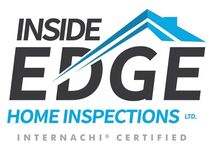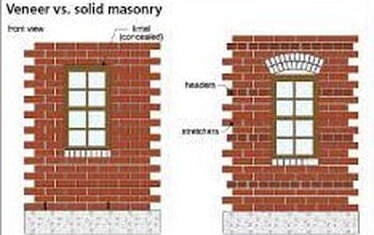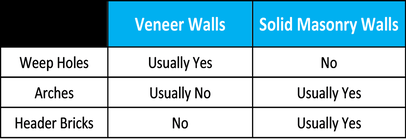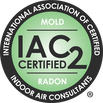Mike's Home Inspector BlogMichael Burfitt |
|
I have made it clear that, like most home inspectors, I have an overall negative view of flipped homes, which are homes that are bought to be renovated and quickly re-sold. That’s not to say flippers are all greedy and/or incompetent people but the simple fact is, partly due to various TV shows, the real estate market currently incentivizes investing in the style of the home instead of structural or system updates. Oftentimes the expensive items are usually neglected in a home flip and some “improvements” can even shorten the life of a home. One of the biggest faux pas that I see in flipped homes is the painting of the home’s bricks, particularly its chimney.
Moisture is the #1 Enemy of Homes and Bricks I sound like a broken record, but it bears repeating again and again. Two of the big myths I hear about home exteriors are that bricks are waterproof or the opposite, that bricks are porous (absorb water) and paint can help seal against water intrusion. Both are incorrect and painting the chimney, while aesthetically pleasing is a bad idea from a maintenance standpoint. Bricks Need to Breathe! Painting a chimney will seal up the pores of bricks. While the obvious rebuttal would be to say it prevents moisture from reaching the brick in the first place, this is simply not realistic, especially in our wet climate. No matter how skilled a painter, moisture WILL eventually find a way behind the paint and will be trapped in the brickwork. This can lead to deterioration of the bricks and mortar and will lead to an expensive repair bill (or worse, complete failure!) down the road, and further damage by the rapid freeze/thaw cycles experienced here in Nova Scotia can contribute to the deterioration. It's Abandoned So Who Cares? Thanks to advances in heating technology, such as heat pumps and high efficiency direct vent furnaces/boilers, many homes in the city no longer use their fireplace. Once again, painting bricks can lead to long term structural failure and a falling brick can be deadly, regardless of whether it's being used or not! Paint Covers Problems A freshly painted chimney is a giant red flag to a home inspector. Paint can be used to hide issues such as cracked/soft mortar, damaged bricks, and the presence of efflorescence (white spots caused by salt deposits that indicate moisture issues). This is yet another reason to have a home inspected regularly by a professional. It’s Not THAT Simple Despite what I just wrote, there ARE some situations where painting is perfectly fine. Indoor bricks can usually be painted without issue because it doesn’t rain indoors (I hope!). There are also certain types of very old chimneys that need a specific type of paint. Always check with a chimney or masonry contractor before engaging in any painting of brick as the potential for long term damage isn’t worth the improvement in appearance! We are all familiar with the story of the Three Little Pigs: the big bad wolf destroyed the straw and stick houses with ease but could not blow down the brick house no matter how much he huffed and puffed. In short, brick is a solid construction material commonly used in chimneys due to its heavy fire resistance although it is not without its drawbacks. The structure of most modern brick houses is not actually made of brick. Yes, the outer walls are constructed with real bricks and are built by masons, but they are mainly for decorative purposes and for protecting the actual walls of the home. A veneer wall and a solid wall might seem identical on the surface but in actuality they are quite different. The biggest difference is that with solid masonry, the brick walls are supporting the house while in veneer construction, it is the opposite: the house is holding up the brick wall! Why then did veneer walls become the norm rather than solid brick? It’s easy to say $$$ but it is a little more complicated than that. As our understanding of building science has grown, we realize the importance of good insulation and what makes a good insulator (hint: something that traps air and is usually light) and brick definitely does not meet that definition. With veneer walls, we usually see a wood framed wall with insulation in the cavity. How Does an Inspector Tell Them Apart? While the obvious answer is that if brick is visible in the interior, it is a solid masonry wall but it is rarely that simple, as drywall finishes usually cover the exterior walls. There are three main differences as outlined below: So….. Which Is Better?
Once again, the answer is “it depends”. Solid brick walls are …. drum roll please…. solid and strong while a veneer wall, while still strong provides plenty of space to add insulation. Some might point to the heavy fire resistance as a big plus to brick but that isn’t really a major consideration: most fires start on the inside of the home and any major fire will likely result in a total loss to the home. As with nearly every feature in a home, each has its advantages and disadvantages with much of the decision coming down to personal preference. |
Archives
July 2024
Categories
All
|
|
Inside Edge Home Inspections Ltd.
Halifax, NS 902-209-9921 [email protected] Proudly Serving the HRM & Central Nova Scotia |



 RSS Feed
RSS Feed

